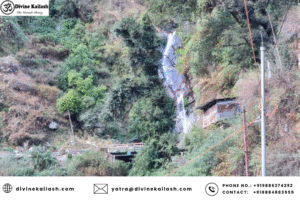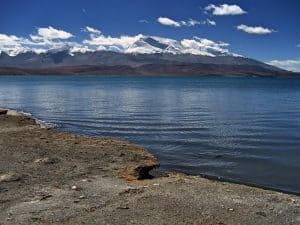The famous Muktinath Temple in Mustang, Nepal is located at the foot of the Thorong La Mountain Pass, at an altitude of 3800 meters. The temple is listed among the highest temples across the world. Hindus call the place ‘Mukti Kshetra’ or the ‘place of liberation’. People often plan to go on a Muktinath Yatra to visit the Muktinath Temple.
Even though the temple is significant to both Hindus and Buddhists, there is a special significance of this religious site for Hindus or Vaishnavas. Sri Vaishnava is a sub-sect of Hinduism and the tradition is predominant in Tamil Nadu in the Southern India. They believe visiting the temple is an ultimate route to attain salvation or liberation.
Hindus believe it is important to visit the temple at least once in their lifetime and perform all the required rituals.
Importance of visiting the temple
There is a great significance of visiting the Muktinath Temple for every Hindu. As per the Hindu mythology, the life cycle of birth and rebirth is an illusion and one must make efforts to free oneself of this ‘Maya’ and attain salvation or nirvana. Since Muktinath is the site where Lord Vishnu is worshipped as the lord of salvation, the temple is regarded as an ultimate place to attain salvation.
There are 108 water spouts in the backyard of the temple. These are bull shaped and carved out in stone. Ice cold water from the holy Gandaki River flows out of these; it is known as ‘Mukti-dhara’. Every Hindu visiting the temple ensures that they take a bath under these water spouts. Doing so is believed to clear all their sins and help them attain nirvana. Taking a holy dip in the two kundas (ponds) just in front of the temple is believed to bring the same effect.
As per the philosophy of Sri Vaishnavas, the temple is regarded as the most sacred place to worship Lord Vishnu. It has also been highly mentioned by Thirumangai Alwar in Nalayira Divya Prabandha 10 Pasurams in Mudal Pathu lyndham thirumozhi. The lords here are believed to grant mukti or liberation.
About the temple
Muktinath Temple also known as ‘Chumig Gyatsa’ is a pagoda style structure and also one among the 108 Vaishnava Shrines. The word ‘Muktinath’ is formed by combining ‘Mukti’ meaning ‘salvation’ and ‘Nath’ meaning ‘God’. Lord Vishnu is thus worshipped here as the god of salvation. The temple is one of the most religious sites in Nepal and equally revered by Hindus and Buddhists. The sacred site is taken care of by the nuns who belong to the lineage of Lama Wangyal.
Inside the Temple
Muktinath Temple is a huge complex that has the Muktinath shrine in the center with several other shrines surrounding it. Once you enter the main complex of the temple that is lined with Tibetan prayer wheels, you will notice these:
Mukti-Kunda: Right in front of the temple, there are two ponds that are called ‘Kundas’. These are named after goddess Laxmi and Saraswati and are also referred to as ‘Mukti-Kunda’. Hindus or the Vasihnavas believe that taking a holy dip in these kundas can bring them liberation.
Mukti Dhara: Behind the Muktinath Temple, within its courtyard, there are 108 water faucets, bull-shaped and carved in stone. The ice cold water of Gandaki River flows out of these. As per a popular Hindu belief, bathing under these water spouts can bring liberation. For the same reason, they are called ‘Mukti-Dhara’.
Muktinath Temple: The main temple, also known as the Muktinath Temple is dedicated to Lord Vishnu who is worshipped as the Lord of liberation here. For the same reason, the place is also called ‘Mukti-Kshetra’ or the ‘Place of liberation’. The idol of Lord Vishnu is present here with that of goddess Lakshmi (Bhumi-devi) and Saraswati (Sri-devi). The other gods worshipped in the temple include Janaki, Garuda, Lava-Kusa and the Sapta Rishis.
Samba Gompa: Inside the complex of the temple, to the left is ‘Samba Gompa’ or the ‘new monastery’. The deities that are worshipped in this monastery are Sakyamuni Buddha (centre), Avalokiteshwar (right) and Guru Rimpoche or Padmasambhava to the left. It is believed that Syandol Lama, the founder of this monastery, originally came from Tibet.
Muktinath Yagna-sala: Muktinath Yagna-sala is a place in the temple complex where rituals are performed and prayers are offered around a holy fire.
Jwala Mai Temple: Jwala Mai Temple is the temple of goddess of fire where the flame is eternal. It is located inside Dhola Mebar Gompa to the east of the temple and goddess of fire is worshipped here. The holy flame is present alongside a spring, bringing together all the natural elements such as earth, water, fire and air.
The other important sites present inside the temple complex include the Narsingh Gompa, Shiva Parvati Mandir, Vishnu-Paduka Mandir, and the Shalimar Gandaki River alongside the main temple.
What is unique about the Muktinath Temple?
There are several facts about the Muktinath temple that make it unique in its own way.
- The Hindus and the Buddhists have a strong belief that the temple site is the only place on earth to have all the five elements-fire, water, air, sky, and earth. All of these together are known to form the universe.
- The holy Gandaki River that flows close to the temple has Shaligram stones in its river bed. These stones are specifically used to build a Vishnu Temple. The stones are found in different colors and shapes and each one is worshipped as a different form of Lord Vishnu. White-colored stone is regarded as Vasudeva, black as Vishnu, blue as Krishna, green as Narayana, and Yellow as Narasimha or Vamana. Some of the stones are also in the shape of Conch and Chakra, both of which symbolize Lord Vishnu.
- As per the Vaishnavas, the temple site is one of the most sacred places for worshipping Lord Vishnu.
- There is a popular belief among the pilgrims that only those who are gifted get an opportunity to visit the temple or get ‘darshan’.





